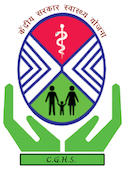Yogic Philosophy
Introduction of Yoga
Anyone can practice Yoga. You don’t need special equipment or cloths- just a small amount of space and a strong desire for a healthier, more fulfilled life. The yoga postures or asanas exercise every part of the body, stretching and toning the muscles and joints, the spice and the entire skeletal system. And they work not only on the body’s frame but on the internal organs, glands and nerves as well, keeping all systems in radiant health. By releasing physical and mental tension, they also liberate vast resources of energy. The yogic breathing exercises known as pranayama revitalize the body and help to control the mind, leaving you feeling calm and refreshed, while the practice of positive thinking and meditation gives increased clarity, mental power and concentration.
Yoga is a complete science of life that originated in India many thousands of years ago. It is the oldest system of personal development in the world, encompassing body, mind and spirit. The ancient yogis had a profound under standing of man’s essential nature and of what he needs to live in harmony with himself and his environment. They perceived the physical body as a vehicle, with the mind as the driver, the soul man’s true identity, and action, emotion and intelligence as the three forces which pull the body-vehicle. In order for there to be integrated development these three forces must be in balance. Taking into account the interrelationship between body and mind, they formulated a unique method for maintaining this balance –a method that combines all the movement you need for physical health with the breathing and meditation techniques that ensure peace of mind.
The Physiology of Yoga
Just as we expect our cars to depreciate in value with age, so we resign ourselves to the fact that our bodies will function less efficiently with the passing years- never stopping to ask our selves if this is really necessary, or why it is that animals seem able to go on functioning well throughout must of their lives, while we do not, in fact, ageing is largely an artificial condition, caused mainly by auto intoxication or self-poisoning. Through keeping the body part clean and well lubricated. We can significantly reduce the catabolic process of cell deterioration.
In recent years, medical research has begun to pay attention to the effects of yoga. Studies have shown, for instance, that relaxation in the Corpse Pose effectively relieves high blood pressure and that regular practice of asana and pranayama can help such diverse ailments as arthritis.
Arteriosclerosis, chronic fatigue, asthma, varicose veins and heart conditions, laboratory tests have also confirmed yogi’s ability to consciously control autonomic or involuntary functions, such as temperature, heartbeat and blood pressure. One study of the effects of Hath Yoga over six months demonstrated the following effects: significantly increases lung capacity and respiration; reduced body weight, an improved ability to resist stress; and a decrease in cholesterol and blood sugar level- all resulting in a stabilizing and restorative effect on the body’s natural systems. Today there can no longer be any doubt of yoga’s effectiveness as both a curative and preventive medicine.
The History of Yoga:
The origins of yoga are shrouded in the mists of time- for yoga is regarded as a divine science of life, revealed to enlightened sages in mediation. The oldest archaeological evidence of its existence is provided by a number of stone seals showing figures in yogic postures, excavated from the Indus valley and thought to date from around 300 BC Yoga is first mentioned in the vast collection of scriptures called the Vedas, portions of which date from at least 2500 BC, but it is the upanishads, which from the later part of the Vedas, that provide the main foundation of yoga teaching, and of the philosophy known as Vedanta. Central to Vadanta is the idea of one absolute reality or consciousness, known as Brahman, that underlies the entire universe.
Around the sixth century BC appeared two massive epic poems – the Ramayana, written by valmiki, and the Mahabharata, written by vyasa and containing the Bhagavad Gita, perhaps the best known of all yogic scriptures. In the Gita, God or Brahman, incarnated as Lord Krishana, instructs the warrior Arjuna in yoga- specification in how to achieve liberation by fulfilling one’s duties in life. The backbone of Raja Yoga is furnished by Patanjali’s Yoga Sutras, thought to have been written in the third century BC. The classical text on Hatha Yoga is the Hatha Yoga Pradipika, which describes the various asanas and breathing exercises which form the basis of the modern practice of yoga.
Meditating Yoga! Evidence of the ancient lineage of yoga is provided by numerous painting and carvings of the practice. This small medieval stone statue shows a yogi in the Lotus Pose.
The Meaning of Yoga
The underlying purpose of all the different aspects of the practice of yoga is to reunite the individual self (jiva) with the Absolute or pure consciousness (Brahman) – in fact. The word yoga means literally “joining”. Union with this unchanging reality liberates the spirit form all sense of separation, freeing it from the illusion of time, space and causation. It is only our own ignorance, our inability to discriminate between the real and unreal, that prevents us from realizing our true nature.
Even in this ignorance, the human spirit often perceives that something is lacking in life- something that neither achieving.














